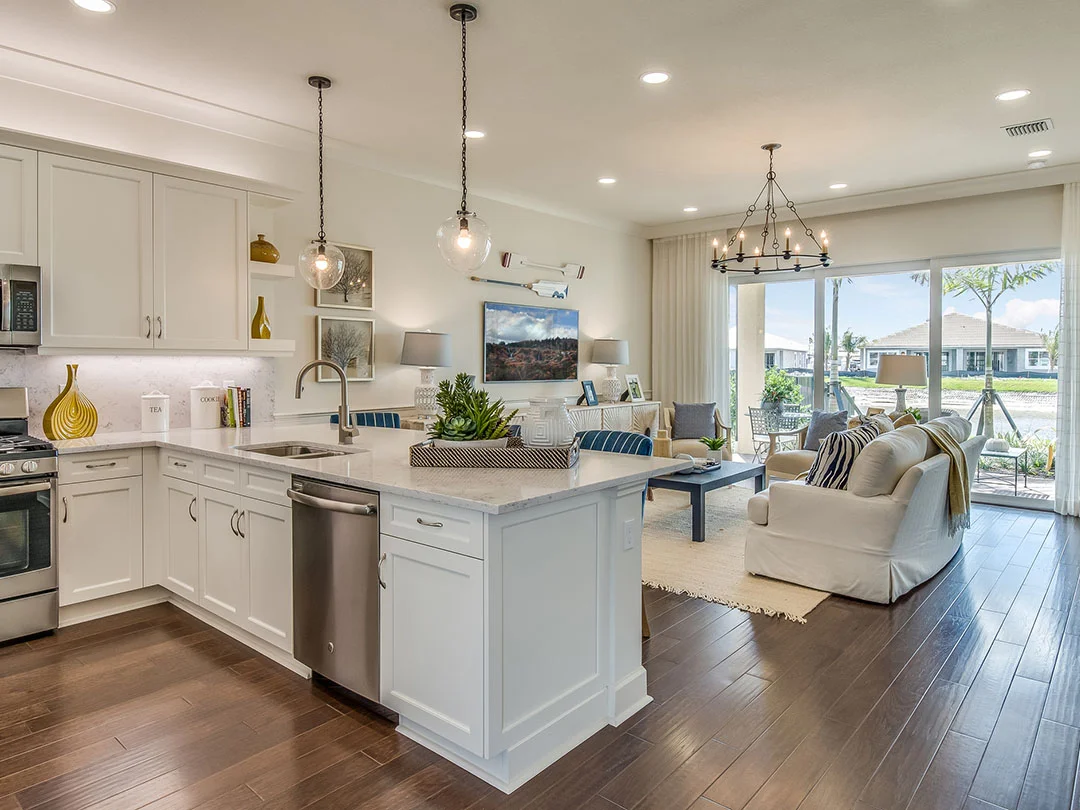
For many homeowners, a home renovation represents an opportunity to reimagine how living spaces function and flow. A kitchen remodel often sits at the center of these plans, especially in Tampa Bay, where lifestyle and entertaining are strong priorities. Among the most requested designs recently is the open-concept kitchen. The question is whether this trend still offers advantages or whether the drawbacks outweigh the benefits.
The Appeal of Light and Space
Open-concept kitchens remove interior walls that once separated the cooking area from the dining room and living spaces. The result is an immediate sense of expansion. Natural light travels farther across the home without barriers to block its path. A kitchen that once felt confined becomes part of a larger, more inviting environment.
This openness also creates visual continuity. Consistent flooring, cabinetry that complements nearby furniture, and carefully chosen paint colors all work together to create harmony across the expanded space. For homeowners who value brightness, openness, and a sense of togetherness, the design delivers a clear aesthetic benefit.
Social Connection and Entertaining
The modern home frequently combines cooking, socializing, and family activities. This interaction is encouraged in open-concept kitchens. Parents can watch children nearby while they prepare meals. Guests feel included in the conversation while food is plated or drinks are mixed.
The transition from the kitchen to the dining and living areas facilitates entertaining during parties. Food flows organically from counters to tables, and hosts don’t hide behind walls but stay with the group. The open design makes it possible for several people to participate without feeling crowded, which is ideal for families who like cooking together.
Practical Drawbacks in Daily Living
The open concept is appealing, but it also presents difficulties. One of the most prevalent issues is noise. When there are no walls to block out sound, conversations, TVs, and kitchen activities all overlap. What is lively to one person might be annoying to another.
Another problem is smells. The smells of cooking quickly permeate open spaces. The smell of frying or simmering may persist long after the meal is done if there is inadequate ventilation. Also, clutter is more obvious. Pressure to keep counters spotless may arise from the instantaneous display of dishes, appliances, and food preparation mess.
Sometimes, energy efficiency is also impacted. It takes more work to heat or cool a large, continuous area than it does to cool smaller spaces. Uneven temperatures can occur in homes without zoned systems, particularly during Tampa Bay summers when air conditioners are already exerting a lot of effort.
Costs and Structural Considerations
It frequently takes more than just taking down a wall to transform a conventional layout into an open-concept kitchen. Reinforcement with beams or other structural supports is required if the wall is load-bearing. Complexity may increase if electrical wiring, ductwork, or plumbing is moved. These changes increase both time and expense.
Coordination of design also becomes more difficult. The kitchen’s finishes need to blend in perfectly with the living and dining areas because of their visual connection. To prevent a haphazard look, countertops, flooring, lighting, and cabinetry should all blend together. Because there are fewer cabinets available when there are fewer walls, storage can also be more difficult. Tall pantry units, islands, or specially designed storage are standard solutions.
Who Benefits Most from the Concept
Open-concept kitchens are still popular with families who like to socialize and host guests frequently. Removing walls is also very beneficial for homes that don’t get enough natural light. Owners who appreciate visual space and social interaction frequently believe the benefits greatly exceed the disadvantages.
However, those who value seclusion, quiet, or privacy might prefer more conventional layouts. Flexible solutions that preserve openness while permitting sporadic separation, like glass partitions, sliding doors, or partial walls, provide a compromise.
A home renovation that involves a kitchen remodel in Tampa Bay requires careful evaluation of both lifestyle preferences and practical realities. Open-concept kitchens still offer rewards when designed thoughtfully, especially in homes that benefit from more natural light and a more communal living space. However, they also demand consideration of noise, ventilation, storage, and energy use. If you are weighing whether this approach aligns with your goals, professional guidance can help. For expert assistance in making design choices that balance beauty with function, consider partnering with Econo-Mike Renovations, a trusted resource for homeowners seeking clarity in their remodeling journey.
Picture Credit: iStock

